At the peak of WWII, around 1943, all able-bodied men were mobilized and sent to the frontlines across the World. The need for war machinery was huge; the army needed vehicles, airplanes, boats, and a huge supply of ammunition.
Somebody had to the hard work back at home in order to produce all of that. The biggest weight fell on the women that stayed in the country – the mothers, sisters, wives, and grandmothers of the brave men fighting in the old country.
Most of them had never worked in heavy industry, and suddenly they were required to leave their homes and children and take up shifts in a factory.
A major labor shortage in the United States happened around 1943. In order to improve the situation and motivate people to join the workforce, the government started a propaganda campaign with posters highlighting gritty and dirty jobs that needed to be done.
Most of those posters were aimed at women. Workers were needed in the food and supplies industry, but most empty spaces were in the munitions sector. Jobs as welders, lathe operators, machinists, and riveters were required the most.
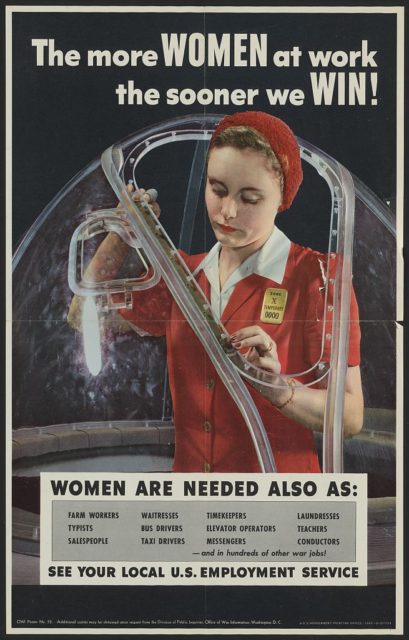
By 1945, more than 2.2 million women were working in the war industries, especially in ammunition plants. They participated in the building of ships, aircraft, vehicles and weaponry.
Women also worked on farms, drove trucks, provided logistic support for soldiers and entered professional areas of work that were previously the preserve of men. In the Allied countries, thousands of women also took a more direct participation in the war effort. They enlisted as nurses serving in the front-line units.
Thousands of others joined defensive militias at home, and there was a great increase in the number of women serving in the military itself, particularly in the Soviet Union’s Red Army.
A LIFE Magazine excerpt from August 9, 1943, notes: “In 1941 only 1% of aviation employees were women, while this year they will comprise an estimated 65% of the total. Of the 16,000,000 women now employed in the U.S., over a quarter are in war industries. Although the concept of the weaker sex sweating near blast furnaces, directing giant ladles of molten iron or pouring red-hot ingots is accepted in England and Russia, it has always been foreign to American tradition. Only the rising need for labour and the diminishing supply of manpower has forced this revolutionary adjustment.”
Here is a series of color portraits of working ladies across factories in the Unites States, made by government photographers, between 1942 and 1943. The images portray the working conditions and the life stories of these hardworking and amazing individuals. All photos are obtained from Library of Congress.
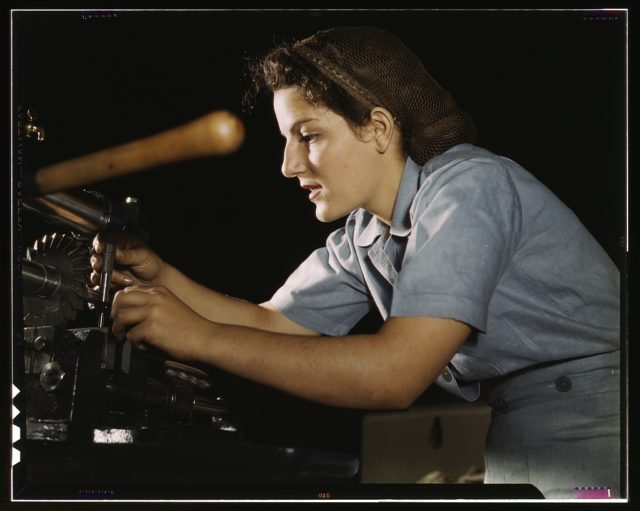
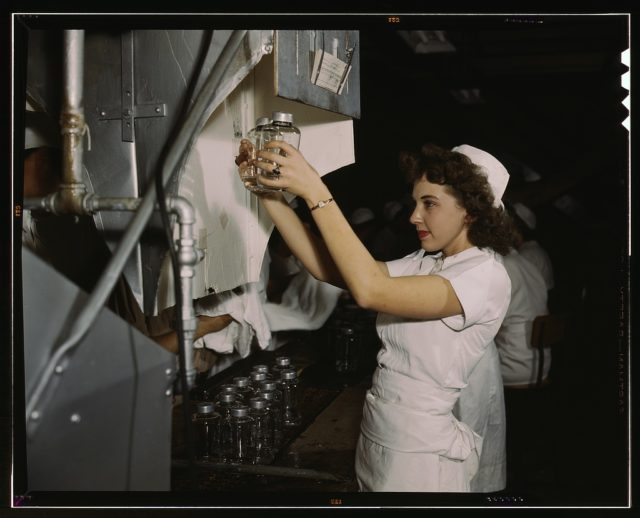
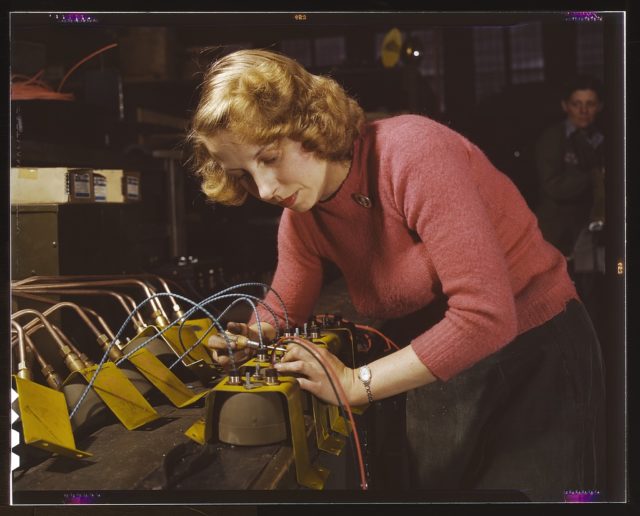
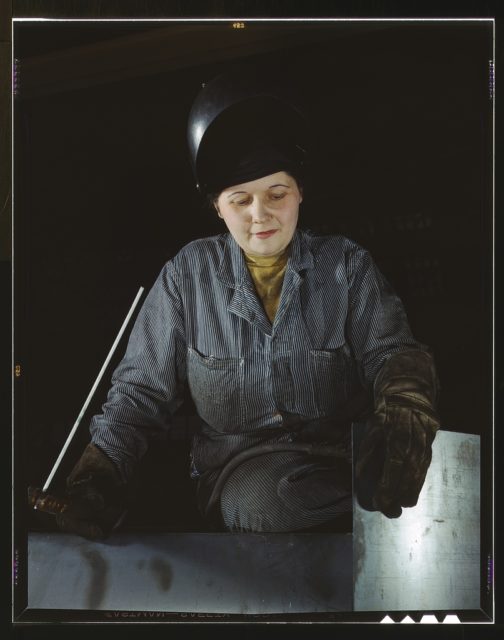
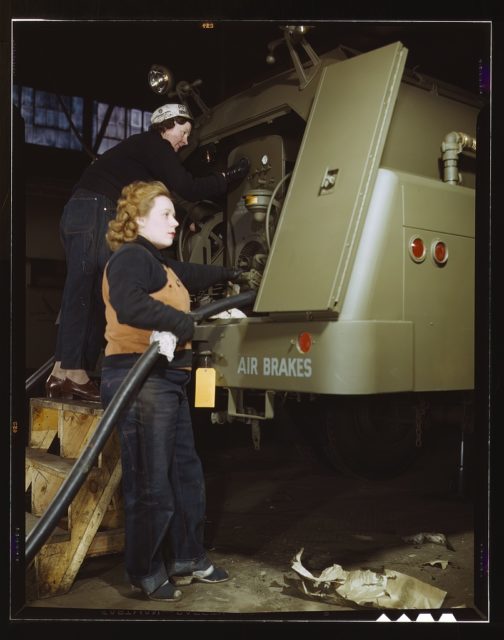
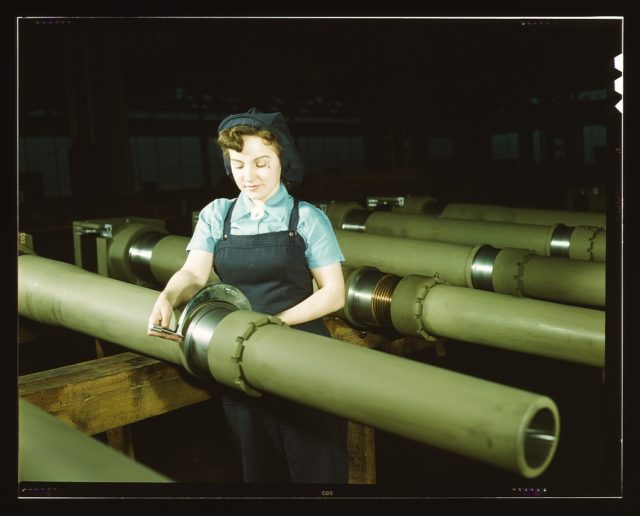
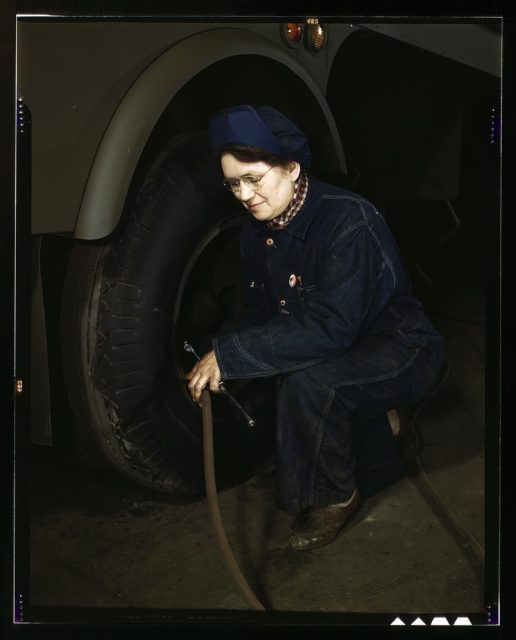
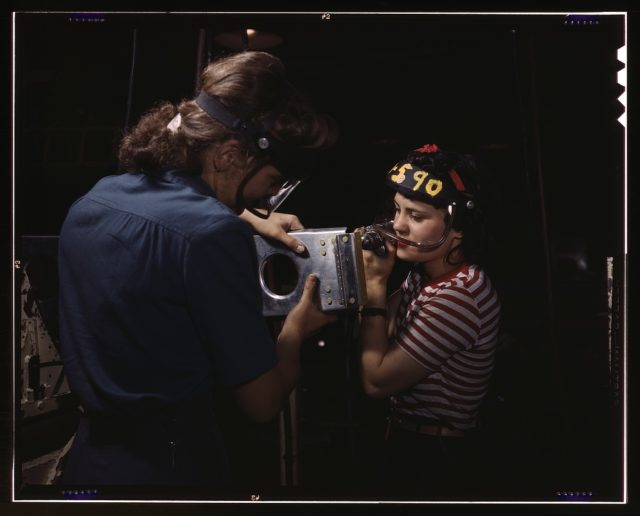
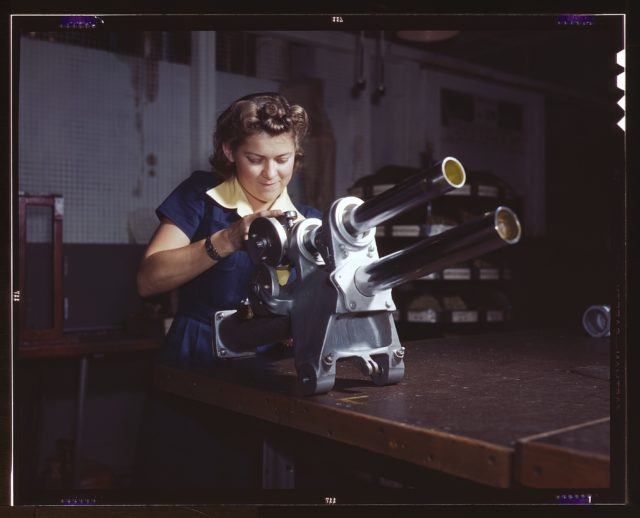
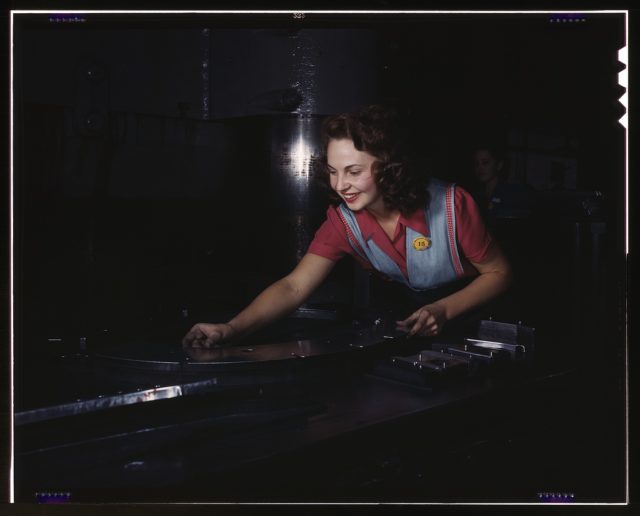
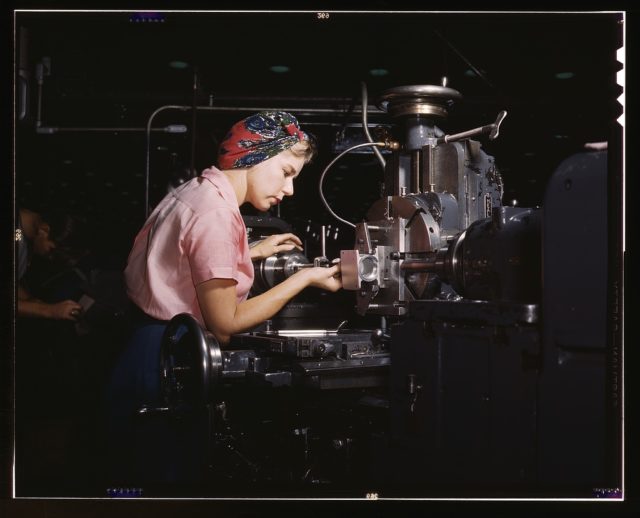
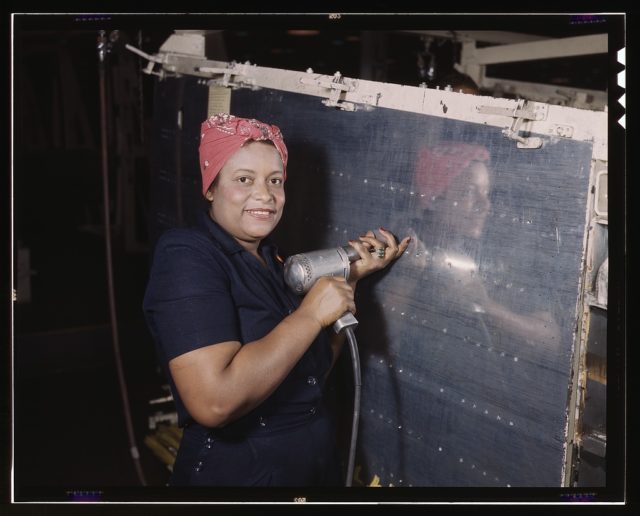
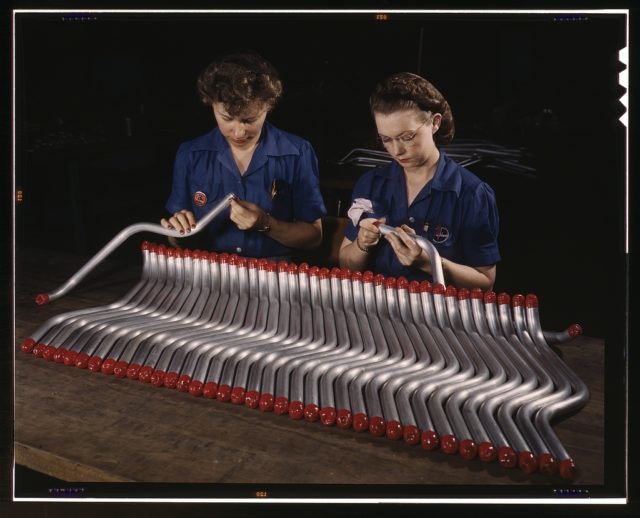
As men left their jobs and went to fight, women stepped up to produce everything that was needed for the war and keeping the country running. They quickly trained and learned all the necessary skills. They instantly excelled at historically male-dominated jobs (riveting, engine repair, machining).
It should never be forgotten that women were an essential part of the war effort. They were an important link in the whole struggle. Without them, the production and supply of goods to the troops would have been much worse.
